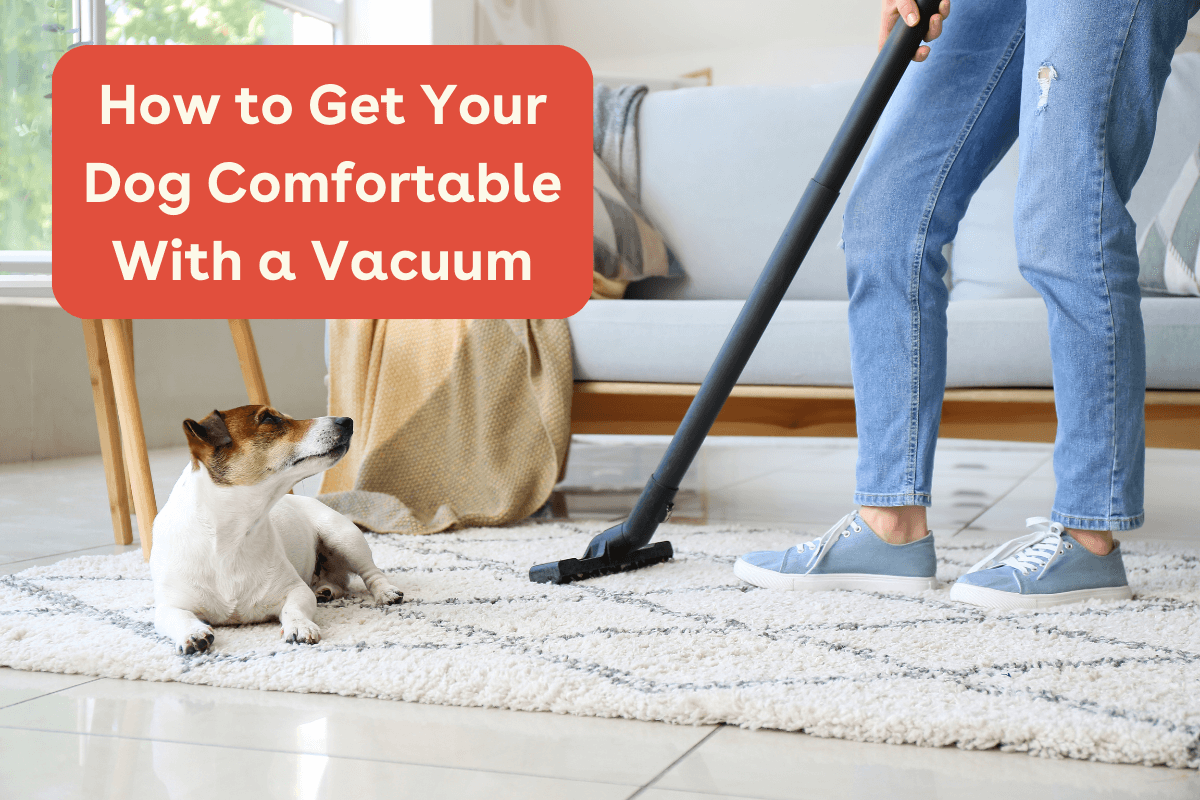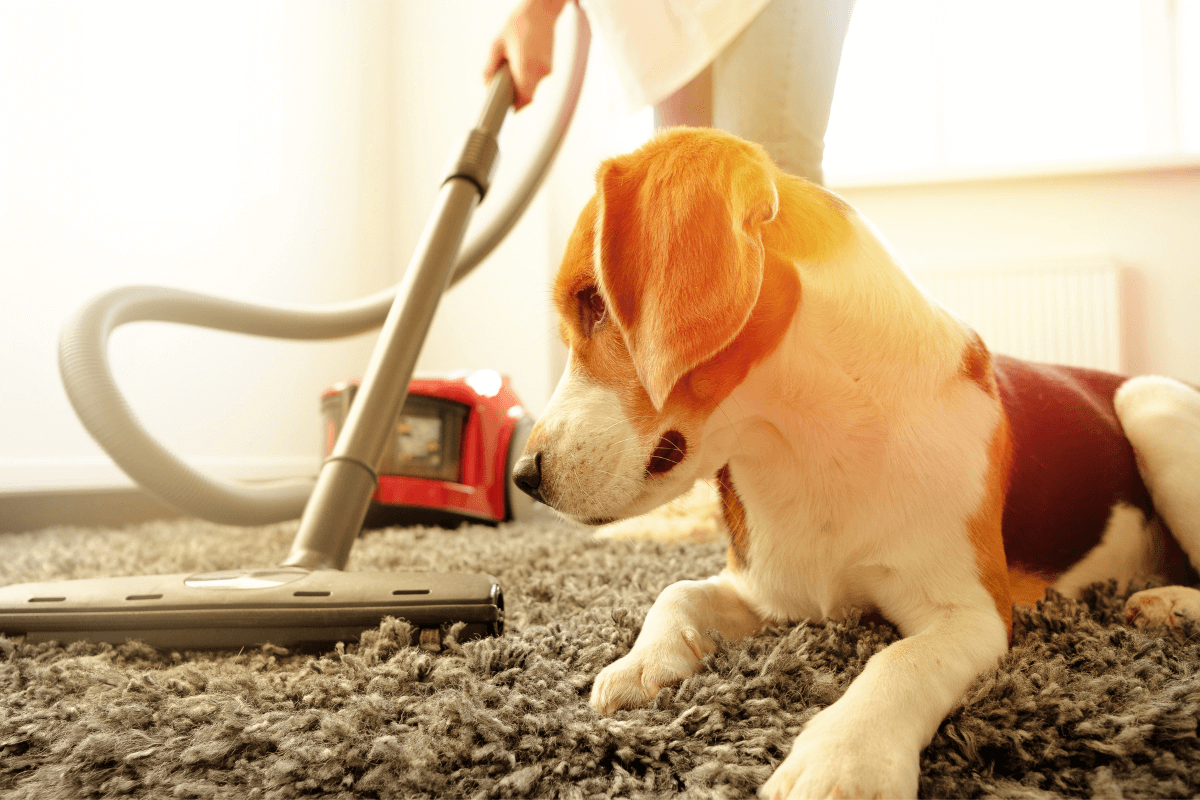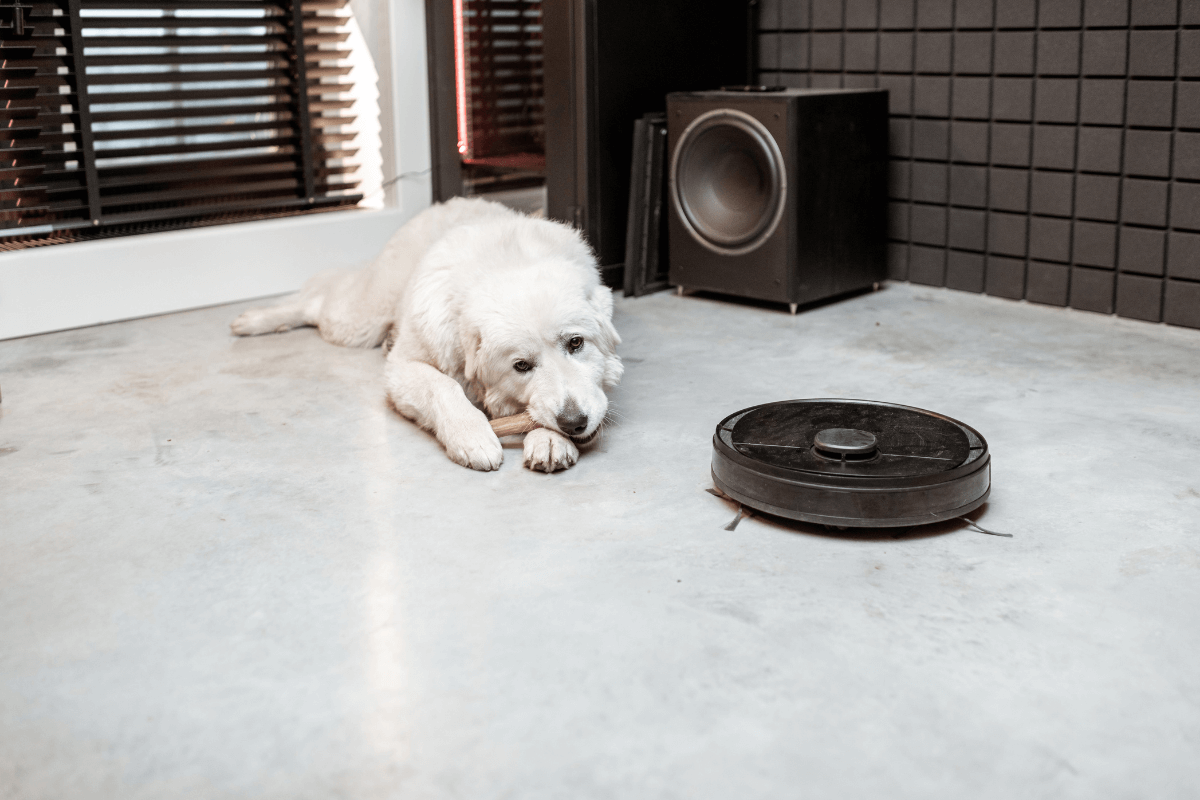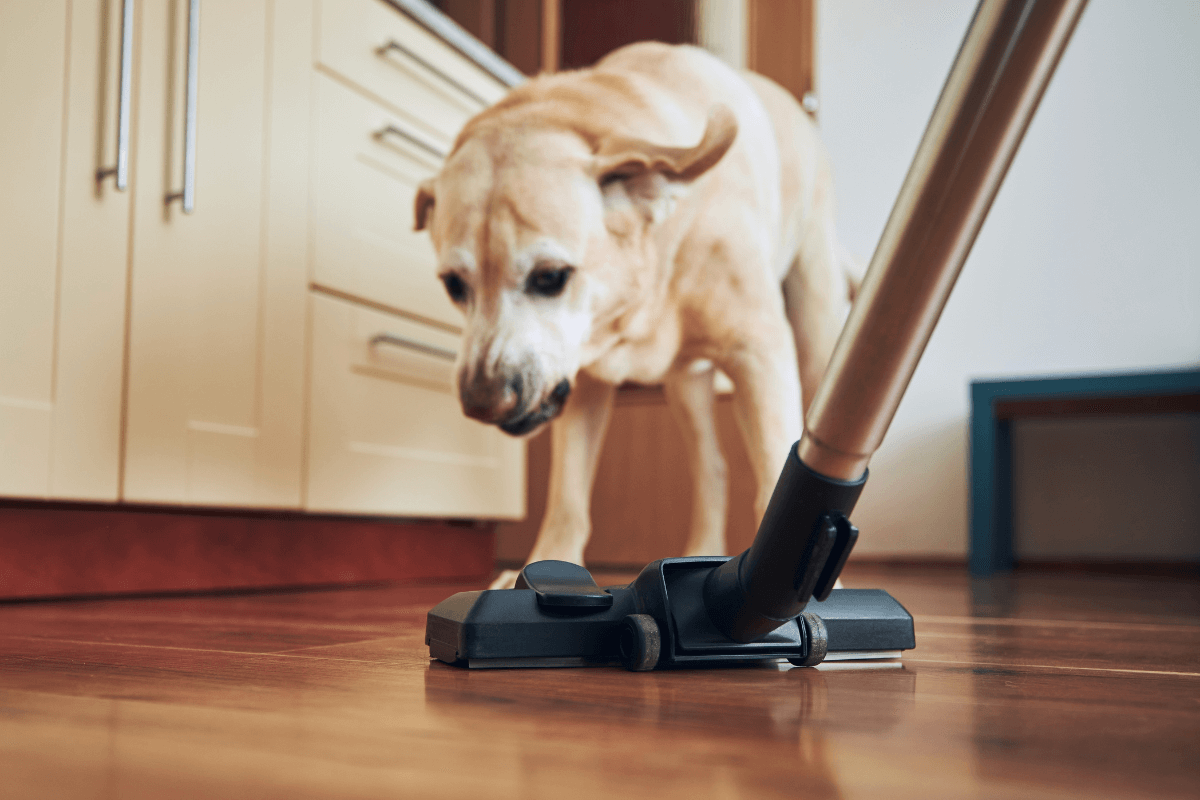Dog Scared of the Vacuum? How to Get Them Used to It | Pupford

‘Tis the season for shedding! We think most dog parents can agree that one of the most needed cleaning tasks in their household is vacuuming, especially if your dog is a breed that sheds a lot.
But the issue a lot of people run into is that their dog is scared of the vacuum or hates it, so they can’t use it. This is super frustrating, considering their dog is the one who contributes to the need to vacuum so often.
But can you really blame your dog for being uncomfortable around the vacuum? It appears at random times and makes loud noises while encroaching on their personal space – that would scare me too if I didn’t understand what was happening.
So with the warm weather and shedding season upon us, we want to help you get your dog comfortable with the vacuum to make cleaning a little less stressful for your pup – and you.
WHY ARE DOGS SCARED OF THE VACUUM?
Most dogs are scared of vacuums because it is an extremely loud, foreign object moving around them.
Put yourself in their shoes, it would be quite terrifying to see a device 2-5 times your size in your home making noises and moving toward you...
And if your pup wasn't properly socialized and desensitized to vacuums as a puppy, there could be some underlying deep fear. The puppy fear periods are vital for getting used to objects, sounds, and different types of people and animals!
Alright, now let's look at some ways to get your dog used to the vacuum. 👇
Related Reading: Why Is My Dog Scared of Other Dogs
DOG TRAINING TERMS & TECHNIQUES TO HELP YOUR DOG'S FEAR OF VACUUMS
Before we jump into the how-to’s, let’s take a step back and look at a few dog training concepts that you may have heard us talk about before:
- Desensitization
- Counterconditioning
- Forming positive associations
A little more on each:
Desensitization - Dog desensitization training uses gradual exposure to things that make your dog react, like the vacuum. You can utilize games like the engage-disengage game and desensitization training sounds to slowly ramp up exposure and reduce your dog’s reactions.
Counterconditioning - Counterconditioning for dogs slowly changes your dog’s response to a stimulus by rewarding them for behavior other than the unwanted one (barking, running away, etc.). With counterconditioning, you are teaching your dog what to do in the presence of the vacuum instead of barking, getting scared, etc.
Positive Association - Dogs learn by association. Positive reinforcement training helps dogs form positive associations with things, including household items and sounds. The goal is to help our dogs learn that the vacuum is a good thing by teaching them to associate it with treats, praise, and comfort. More on that in a bit!
Starting with these concepts will help you better understand your dog’s behavior, and why we recommend approaching this challenge in a certain way.
🐶 Don't miss out, sign up for our 100% free online video dog training course 30 Day Perfect Pup. Get started now!
HOW TO GET YOUR DOG USED TO A VACUUM
Now let’s put these theories into practice to help your dog become more comfortable around the vacuum.
Here’s how to help your puppy or dog get used to a vacuum! ⤵️
1. START WITH THE VACUUM TURNED OFF
Even if your dog only gets scared when the vacuum is running, start by taking out the vacuum but keeping it off.
Let them explore the vacuum at their own pace. Reward with high-value training treats often to proactively help your dog begin forming a positive association with the vacuum.
This will help break down the fear barrier slowly, as your dog will have a lot of opportunities for success at this stage. The key is to reward frequently – we are not looking for a specific behavior here, but rather just helping your dog understand that the vacuum = good things (treats!).
An important note about this beginning stage is that we are not trying to force any interaction. Your dog doesn’t need to do anything specific here in order to get a reward, we’re just allowing them to safely and comfortably be near the vacuum without feeling scared or threatened.
2. RUN THE VACUUM FOR SHORT PERIODS OF TIME

Once your dog has had a few sessions of exposure with the vacuum turned off, you can start to turn it on around them.
Note: If your dog is really scared of the vacuum, you can even start by playing vacuum sounds on your phone at a really low volume. Get access to the Pupford App with desensitization sounds here.
Run the vacuum for short periods of time, starting with just a few seconds. Reward frequently while it is on to continue building the positive association and desensitize them to the sound.
During this stage, you can toss the treats away from the vacuum to your dog. If they have a bed or mat in the area, ideally you would toss it in that direction. That way, an additional layer to the association is formed: when the vacuum turns on, I can walk away from the noise and go towards my “place” and good things happen!
As your dog gets more comfortable, you can increase the duration and begin moving the vacuum around.
At this stage, it’s important to turn off the vacuum immediately if you notice any signs of stress in your dog. We want to set them up for as many wins as possible and keep the interaction positive.
3. REWARD FOR FAVORABLE BEHAVIORS WHILE VACUUMING
By now, your dog should be comfortable enough with the vacuum in general (after a lot of practicing, of course!) that you can start to guide them toward favorable behaviors.
Now when the vacuum is running, reward them when you see them doing something you want them to be doing during vacuuming like:
- Laying on their place or bed
- Playing with a toy
- Engaging with a dog chew
- Ignoring the vacuum completely
And so on.
🐶 Don't miss out, sign up for our 100% free online video dog training course 30 Day Perfect Pup. Get started now!
At this point, not only will there be a positive association formed, but your dog will learn that when you are vacuuming, there are good things they can do too – a win-win!

WHY WE LIKE THIS APPROACH FOR HELPING A DOG SCARED OF THE VACUUM
As you can see, this approach combines desensitization, counterconditioning, and positive association forming to help your dog become comfortable with your vacuum.
Together, they form a gentle and low-stress approach that focuses on keeping your dog comfortable and happy, resulting in lots of treats for them – yay!
However, it’s important to mention that this might not work for every dog. If your dog shows signs of severe anxiety or fear around the vacuum and is not responding to desensitization or not forming positive associations, it might be worth consulting a professional dog trainer to see if there are any underlying issues to address before working specifically on the vacuum.
Related Reading: Noise Phobias in Dogs
DOG SCARED OF THE VACUUM - WHAT TO DO RECAP

Your dog's fears can be changed over time and they can become comfortable with almost any object. Remember to take it slow and only move at your dog's pace!
As an oversimplified recap, here's how to get your dog used to vacuums:
- Start the desensitization process by giving treats around the vacuum with the vacuum still OFF
- Slowly progress to running it for just a few seconds and pairing it with treats (if your dog is too scared, go back a step)
- Over time, reward alternative behaviors around the vacuum like laying in their place or ignoring the vacuum
And if you're looking for more in-depth video training to raise a well-mannered and well-adjusted dog, check out our free 30 Day Perfect Pup Course. Sign up here!
Did your dog need time to adjust to the vacuum? If so, how long, and how did it go for you guys? Tell us about your experience in the comments!
🐶 Don't miss out, sign up for our 100% free online video dog training course 30 Day Perfect Pup. Get started now!
0 Comments